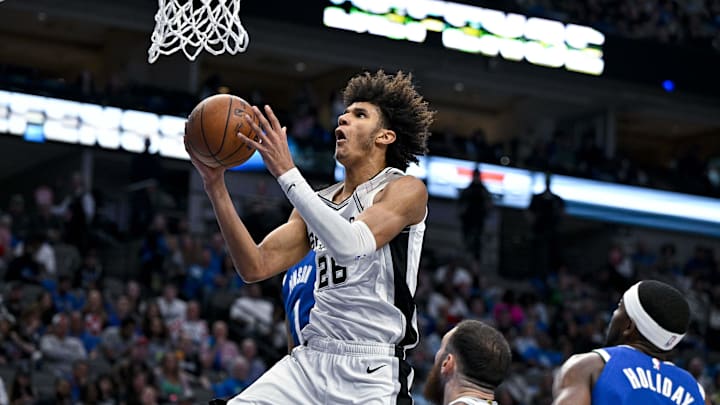The San Antonio Spurs momentarily broke the silence of the offseason on Monday morning, officially announcing the franchise re-signed Dominick Barlow to a two-way contract. The 20-year-old forward made a breakthrough at the California Classic and Las Vegas Summer League, averaging 15.8 points, 8.3 rebounds, 2.5 assists, and 1.7 blocks per game on 61.2% shooting as a standout at both events.
An impressive showing from Barlow convinced the Silver and Black to bring him back for another go-round in the 2-1-0, but his recent contract has stipulations that differentiate him from players on your run-of-the-mill veteran minimum salaries. With that in mind, now is the perfect time to dive into all the essential details of how two-way deals work in the NBA and where the front office can go from here.
How does a two-way contract work in the NBA?
The league first introduced two-way contracts in 2017, but the rules around them have continued to change nearly every season. After the NBA and NBPA ratified a new collective bargaining agreement earlier this year, the guidelines around these deals have shifted once again. Here is everything Spurs fans need to know about two-way contracts as the good guys prepare for the upcoming season.
- Every franchise is allowed to have three two-way players signed to their roster beginning in the 2023-24 season.
- Only players that have less than four years of experience in the NBA are eligible to sign a two-way contract.
- Two-way players can spend an unlimited amount of time with their team's G League affiliate during the regular season.
- Two-way players can only be active for 50 regular-season games before their team must waive or sign them to a standard contract.
- A team's two-way players can only be active for a combined 90 games if they are not carrying a full 15-man roster.
- Players signed to a two-way contract will earn $559,782 this season, which is half of the rookie minumum salary.
How many roster spots will the Spurs have on opening day?
The Spurs have 18 standard contracts and a pair of two-way deals on their payroll, which means they must release three players and fill their last two-way spot before finalizing their opening day roster on October 23rd. San Antonio has numerous decisions left on their plate this summer, and training camp could determine who gets another season to prove themselves and who joins the free agent market.
